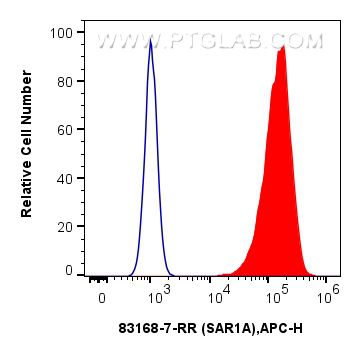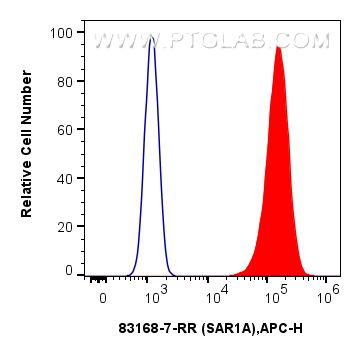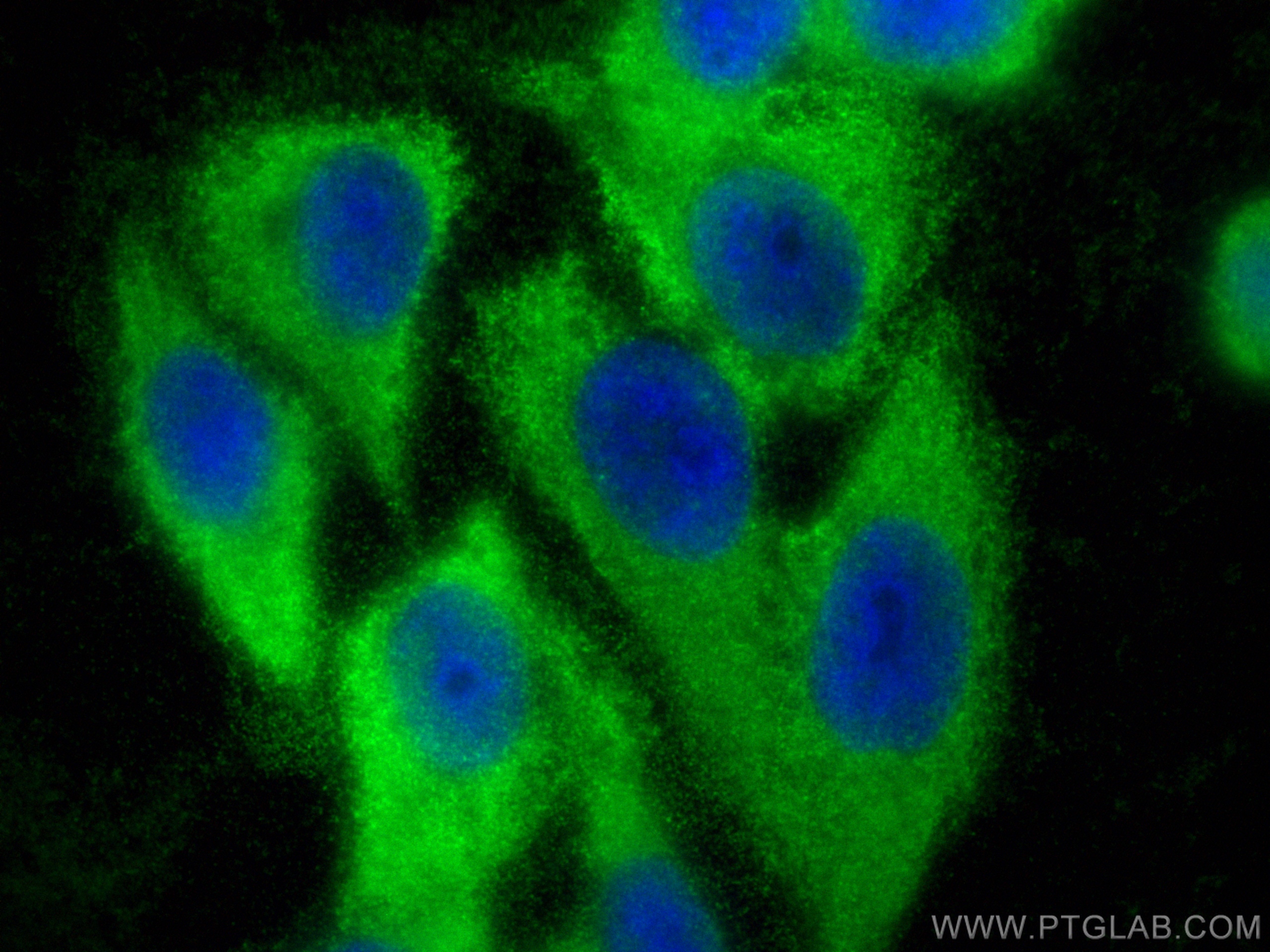验证数据展示
经过测试的应用
| Positive IF/ICC detected in | HepG2 cells |
| Positive FC (Intra) detected in | A549 cells, A431 cells |
推荐稀释比
| 应用 | 推荐稀释比 |
|---|---|
| Immunofluorescence (IF)/ICC | IF/ICC : 1:200-1:800 |
| Flow Cytometry (FC) (INTRA) | FC (INTRA) : 0.25 ug per 10^6 cells in a 100 µl suspension |
| It is recommended that this reagent should be titrated in each testing system to obtain optimal results. | |
| Sample-dependent, Check data in validation data gallery. | |
产品信息
83168-7-RR targets SAR1A in IF/ICC, ELISA applications and shows reactivity with human samples.
| 经测试应用 | IF/ICC, ELISA Application Description |
| 经测试反应性 | human |
| 免疫原 | Peptide 种属同源性预测 |
| 宿主/亚型 | Rabbit / IgG |
| 抗体类别 | Recombinant |
| 产品类型 | Antibody |
| 全称 | SAR1 homolog A (S. cerevisiae) |
| 别名 | SAR1, GTP binding protein SAR1a, EC:3.6.5.2, COPII-associated small GTPase, COPII associated small GTPase |
| 计算分子量 | 22 kDa |
| GenBank蛋白编号 | NM_020150 |
| 基因名称 | SAR1A |
| Gene ID (NCBI) | 56681 |
| RRID | AB_3670864 |
| 偶联类型 | Unconjugated |
| 形式 | Liquid |
| 纯化方式 | Protein A purfication |
| UNIPROT ID | Q9NR31 |
| 储存缓冲液 | PBS with 0.02% sodium azide and 50% glycerol , pH 7.3 |
| 储存条件 | Store at -20°C. Stable for one year after shipment. Aliquoting is unnecessary for -20oC storage. |
背景介绍
SAR1A, also named as SAR1, SARA and SARA1, belongs to the small GTPase superfamily and SAR1 family. It is involved in transport from the endoplasmic reticulum to the Golgi apparatus. SAR1A is required to maintain SEC16A localization at discrete locations on the ER membrane perhaps by preventing its dissociation. SAR1A-GTP-dependent assembly of SEC16A on the ER membrane forms an organized scaffold defining endoplasmic reticulum exit sites (ERES).
实验方案
| Product Specific Protocols | |
|---|---|
| IF protocol for SAR1A antibody 83168-7-RR | Download protocol |
| FC protocol for SAR1A antibody 83168-7-RR | Download protocol |
| Standard Protocols | |
|---|---|
| Click here to view our Standard Protocols |


